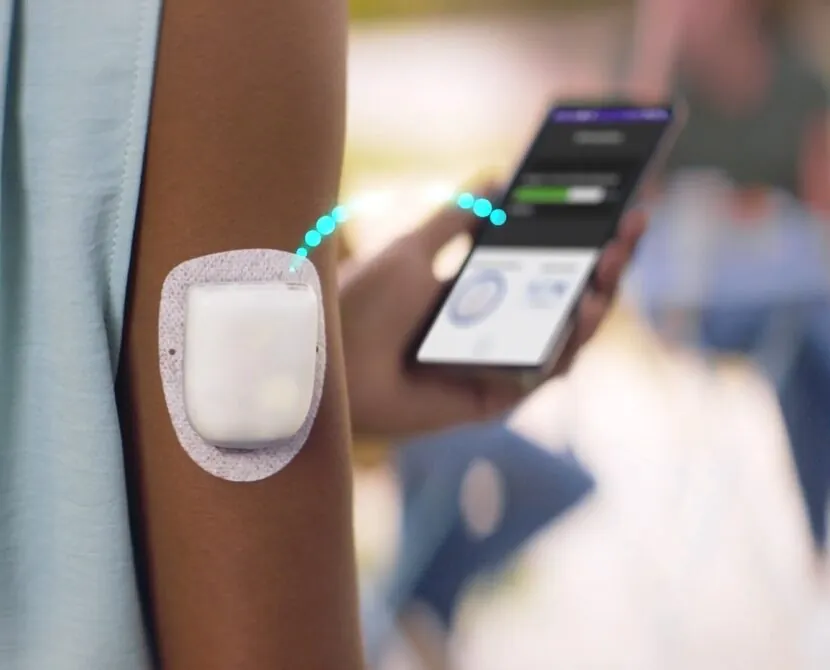Automated Insulin Delivery’s Role in Managing Glycemia Through the Life Cycle

We are pleased to present information from Sansum Diabetes Research Institute‘s recent OneTalk: Omnipod 5 Care Strategies Along the Lifecycle. This article is sponsored by Insulet Corporation and written by Hope Warshaw, MMSc, RD, CDCES, BC-ADM.
To say that managing the ins and outs of daily life with diabetes is challenging is an understatement. Add in common life situations like intense exercise, high fat and protein meals, or a life phase like puberty or menopause, and the challenges increase. Insulet Corporation, makers of the Omnipod 5 Automated Insulin Delivery System, participated in a OneTalk special presentation hosted by Sansum Diabetes Research Institute (SDRI) in Santa Barbara, CA, along with two SDRI diabetes care providers – Ashley Thorsell, MD, a research physician and endocrinologist who also lives with type 1 diabetes and Mei Mei Church, FNP-BC, CDCES, a family nurse practitioner. OneTalk is a platform where members of the type 1 community can hear from experts in the field of diabetes, and this event offered concrete, practical advice to deal with the many challenges of living with type 1 diabetes.
During this engaging dialogue, it was clear that an automated insulin delivery (AID) system is an incredible tool to help carefully manage and adjust insulin delivery and other factors that impact glycemia. Integral to AID systems is the integrated continuous glucose monitor (CGM), which provides real-time glucose data critical to making real-time decisions and adjustments to manage numerous real-life situations.
Regardless of the life situation or phase, these experts repeatedly underscored three overarching messages:
- One size does not fit all. Every person is different. In addition, a solution that works for you one time may not work as well the next time this same situation occurs.
- Apply trial and error. If a solution you tried works well for a situation, try it again. If what you tried didn’t work well, try another solution. Keep trying.
- Learn about how your body responds. These experiences give you a blueprint to go by over time.
Managing Common Real-life Situations:
- Exercise: The experts agreed that this topic encompasses an array of situations and can vary tremendously based on one’s physical fitness and the type of activity. A benefit of the Omnipod 5 System is the ability to enable the Activity feature. This changes the Target Glucose from the user’s set target (which can vary from 110 mg/dL to 150 mg/dL in increments of 10 mg/dL) to 150 mg/dL with the goal to deliver less basal insulin for a defined duration (can be set for up to 24 hours). The experts listed other common use scenarios for the Activity feature, including yard work, manual labor, school recess, or running after young children. They also listed situations for the Activity feature that people don’t think of as activity, such as: if/when glucose is running low for hours and perhaps overnight or when less food than anticipated is eaten. As for advice on how much time before starting the activity to enable the Activity feature, the experts suggested 30, 60, or even 90 minutes and repeatedly said it depends. Another strategy suggested reducing mealtime bolus insulin if the exercise is done within two hours after a meal.
- High fat and high protein meals: The experts drew attention to the advantage of AID systems to manage these meals and the potential resulting hyperglycemia because the system predicts glucose levels and can compensate for the glucose rise with delivery of more insulin. Note that these meals typically raise glucose levels more slowly after eating. The experts noted that people may need to give insulin in a couple of doses – one when starting to eat and another two to four hours after eating. An alternative strategy would be to give the full bolus dose 15 minutes before the meal and put an alarm for 2-3 hours later to give a correction then. The experts encourage people to take their mealtime bolus 15 minutes pre-meal to manage post-meal glucose levels.
- One-time use of steroids: The use of steroids to treat an acute medication situation, such as an asthma or lupus flare-up, can cause insulin resistance and increase insulin needs. People may need to intensify their insulin-to-carbohydrate ratio and correction factor. Another strategy may be to revert to Manual Mode during steroid use. Multiple factors make it difficult to estimate insulin requirements in these situations because doses vary based on type and dose of steroid used, length of use, body size, and more.
- Illness or need for surgery: Glucose levels may increase due to stress or, on the converse, they may put a person at risk of hypoglycemia if they cause nausea and/or vomiting and reduced food intake. Experts emphasized practicing good diabetes care during a stomach bug or food poisoning. Stay hydrated, and monitor glucose and ketone levels. The experts encouraged keeping the AID system in Automated Mode for automatic adjustments to insulin delivery. They reinforced the need for insulin even when a person can’t consume calories. It’s ideal, the experts noted, to have a person stay on their AID system during surgery to achieve more steady glucose management. They suggested enabling the Activity feature before, during, and hours after surgery until getting back to a usual eating pattern.
- Menstrual cycles: Menstrual cycles can cause glucose management disruptions, and unfortunately, they aren’t consistent from person to person. Some people see a rise in glucose levels a few days before or at the start of their period due to insulin resistance. Yet others do not. Insulin resistance can occur in the second half of a person’s cycle due to an increased presence of the hormone progesterone. Then as a person’s period begins, estrogen increases which can make a person more insulin sensitive. The net result is some people may need to change both their basal and bolus insulin needs during their cycle. Observe and learn your patterns, recommended these experts. Then use the AID system features to adjust insulin dosing.
Managing Life Cycle Phases:
- Puberty: During puberty, insulin needs typically increase, in part due to insulin resistance caused by increases in hormones the body produces. Since these increases occur slowly, the Omnipod 5 System in Automated Mode is continually adapting and adjusting insulin delivery to achieve the chosen target glucose level. A couple of other adjustments may assist, such as decreased insulin-to-carbohydrate ratio, decreased correction factors, and a shorter duration of insulin action.
- Perimenopause and menopause: The experts defined perimenopause as occurring around 45 to 55 years of age and menopause around 50. Menopause is defined as having no periods for a year. During menopause, insulin requirements tend to decrease, but the experts encourage people to be ready for the unexpected and noted people’s experiences are different. They agree that the AID system has advantages during these life cycle phases because it can better micromanage glucose levels to achieve better results.
Regardless of the life situation or phase you find yourself managing, these experts concur that using an AID system can make managing diabetes easier while lowering A1C, having less nighttime hypoglycemia, and increasing time in range. Plus, AID systems give you a few more tools to put into action to balance glucose levels. Remember to share your data and the challenging situations you face with your diabetes care providers. Work with them to determine optimal solutions based on your needs.
View this OneTalk in its entirety on YouTube: OneTalk: Omnipod 5 Care Strategies Along the Lifecycle.
Hope Warshaw, MMSc, RD, CDCES, BC-ADM, owns Hope Warshaw Associates, LLC, a private practice and consultancy based in Asheville, NC. She has 45-plus years of expertise in diabetes care and management and is a tireless and passionate volunteer and leader in several professional organizations, including ACDCES, ADA, and the Academy of Nutrition and Dietetics. She is an advocate for the value of peer support and peer support communities such as DiabetesSisters and is thrilled to see them flourish.
Written by





